In January of 2008 I was onboard a cruise ship for a tour of New Zealand that included time spent viewing Whakaari / White Island which is an active andesite stratovolcano that rises 1,053 feet above the Bay of Plenty.
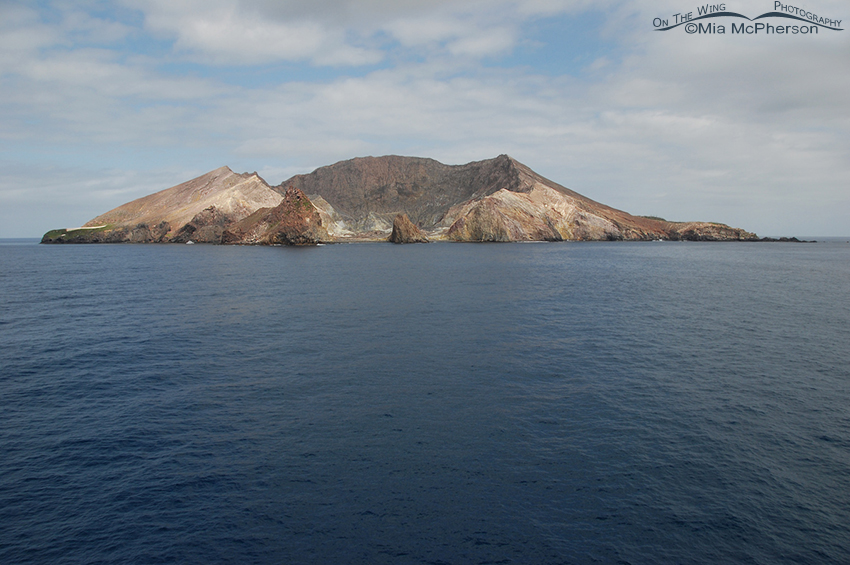 Whakaari / White Island, New Zealand – Nikon D200, handheld on board ship, f5.6, 1/1500, ISO 200, Nikkor 18-200mm VR at 18mm, natural light
Whakaari / White Island, New Zealand – Nikon D200, handheld on board ship, f5.6, 1/1500, ISO 200, Nikkor 18-200mm VR at 18mm, natural light
This image shows Crater Bay near the center of the island. Captain Cook gave it the name “White Island” in 1769 because it appeared to always be in a white cloud of steam, he did not make landfall and did not know the island was an active volcano. The Māori name for the island is ‘Te Puia o Whakaari’, meaning ‘The Dramatic Volcano.’
At the time I remember thinking that I had never seen water that was such a deep and beautiful royal blue and that the island seemed to be alive with volcanic activity. (Eruptive History from the Smithsonian)
Before the trip I had purchased Nikkor’s 18-200mm VR lens and because of the Vibration Reduction it worked very well with the slight bobbing of the ship.
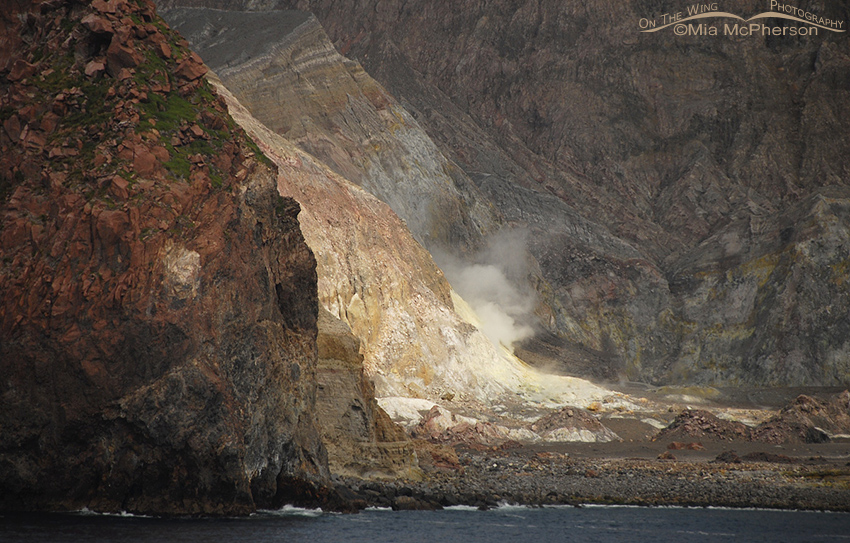 View of a steaming fumarole on Whakaari / White Island – Nikon D200, handheld, f5.6, 1/2500, Nikkor 18-200mm VR at 200mm, natural light
View of a steaming fumarole on Whakaari / White Island – Nikon D200, handheld, f5.6, 1/2500, Nikkor 18-200mm VR at 200mm, natural light
An attempt to mine sulfur came to an end in 1914 when a flow of mud and debris; called a lahar, killed all 10 of the workers that were on the island at the time, only the camp cat survived. The last major eruption was in 2000 but volcanic activity is ongoing as seen by the steaming fumarole in this photo. In images taken from the air a lake can be seen in a crater but not from my perspective on board the ship. The island is now privately owned but there is access provided by several tour boat companies. Seismic activity is monitored by volcanologists and scientists.
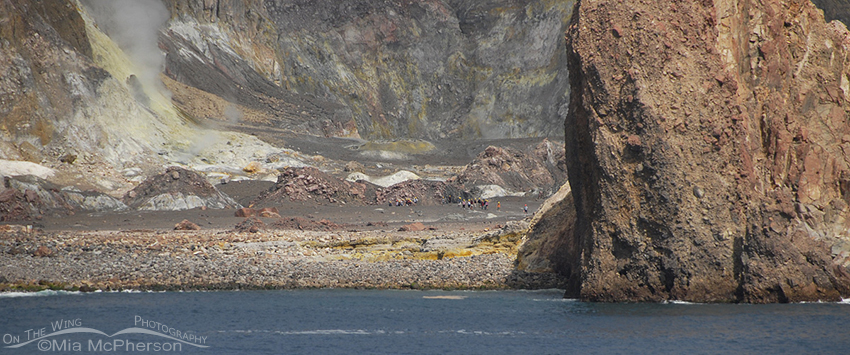 People in the crater of Whakaari / White Island – Nikon D200, handheld, f5.6, 1/1600, ISO 200, Nikkor 18-200mm VR at 200mm, natural light
People in the crater of Whakaari / White Island – Nikon D200, handheld, f5.6, 1/1600, ISO 200, Nikkor 18-200mm VR at 200mm, natural light
I am not certain if the people in the crater in this image are tourists or scientists but they are just tiny specs to the left of the large rock on the right side of the frame, all of them were wearing hardhats.
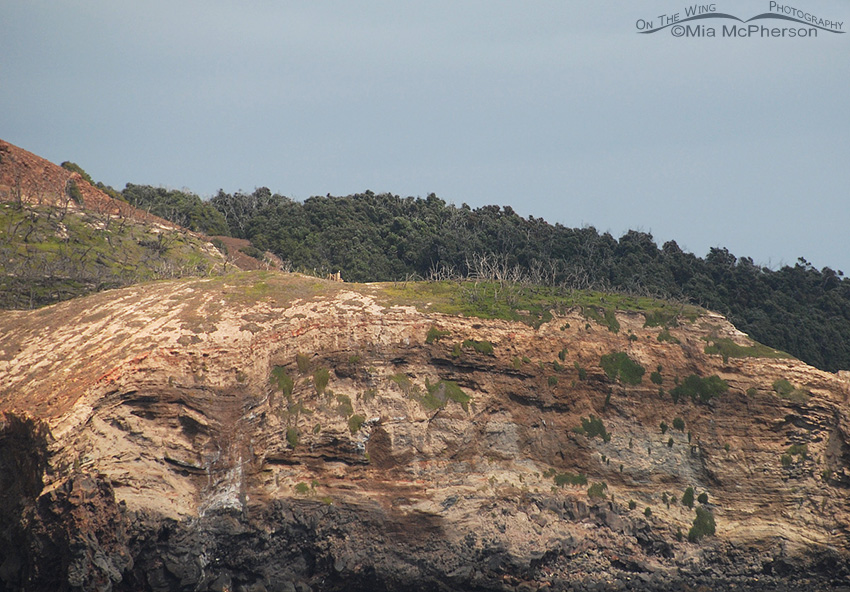 Remnants of the Pōhutukawa forest – Nikon D200, handheld, f5.6, 1/2000, ISO 200, Nikkor 18-200mm VR at 200mm, natural light
Remnants of the Pōhutukawa forest – Nikon D200, handheld, f5.6, 1/2000, ISO 200, Nikkor 18-200mm VR at 200mm, natural light
Major eruptions from 1981 through 1983 decimated the pōhutukawa forest on the island, in the image above you can see existing pōhutukawa trees and in the foreground of the frame the skeletons of trees that were killed by those eruptions. Pōhutukawa are coastal evergreen trees that are endemic to New Zealand that have brilliant red flowers from November through January and is nicknamed the “New Zealand Christmas Tree”.
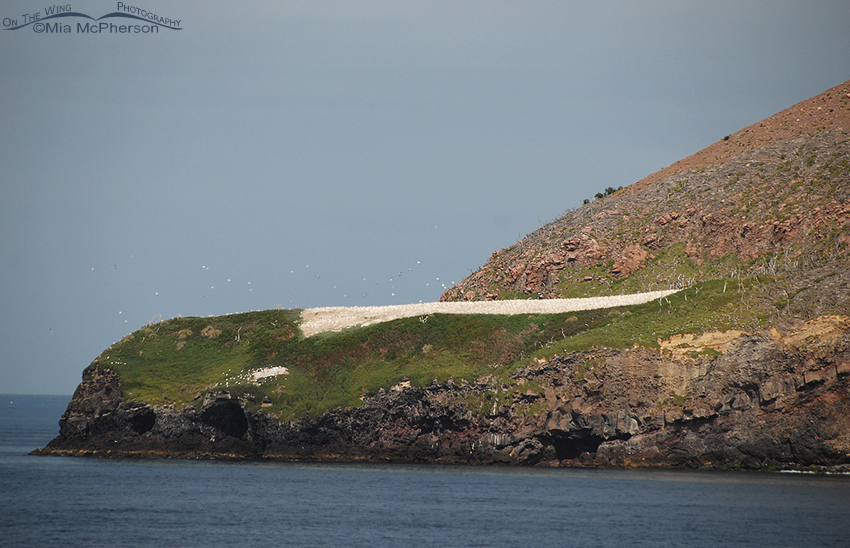 Australasian Gannet Colony on Whakaari / White Island – Nikon D200, handheld, f5.6, 1.2500, ISO 200, Nikkor 18-200mm VR at 200mm, natural light
Australasian Gannet Colony on Whakaari / White Island – Nikon D200, handheld, f5.6, 1.2500, ISO 200, Nikkor 18-200mm VR at 200mm, natural light
Whakaari / White Island has breeding colony of Australasian Gannets (Morus serrator) of approximately 3000 pairs and has been named an Important Bird Area (IBA) by Birdlife International. In this frame you can see the birds on the nesting ground and in flight.
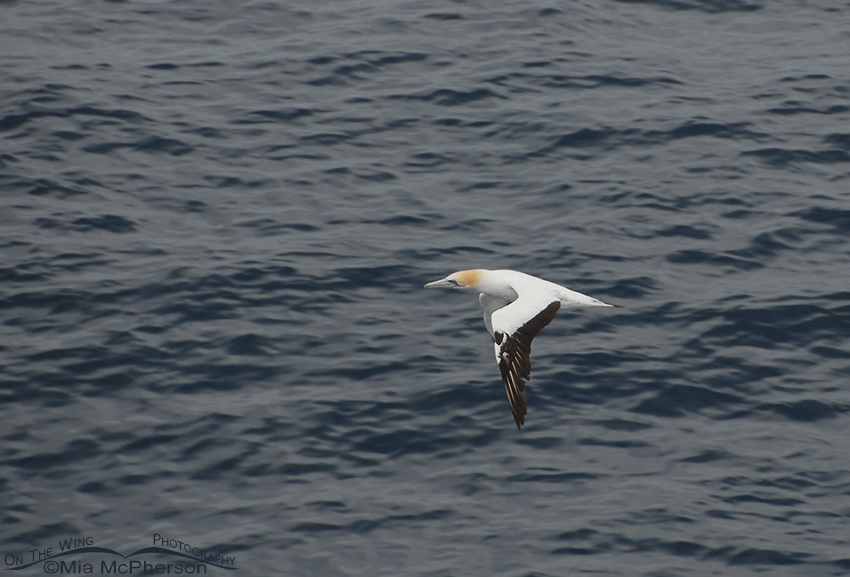 Australasian Gannet – Nikon D200, handheld, f5.6, 1/640, ISO 200, Nikkor 18-200mm at 200mm, natural light
Australasian Gannet – Nikon D200, handheld, f5.6, 1/640, ISO 200, Nikkor 18-200mm at 200mm, natural light
My one huge regret for the time I spent viewing and photographing Whakaari / White Island is that I didn’t have the foresight to bring my Nikkor 80-400mm VR with me to the observation deck because with it I would have gotten some wonderful images of the Australasian Gannets flying by. They flew in close to the ship and quite often I could have gotten full frame shots of these beautiful birds.
Just a few images from my trip to Aotearoa better known as the “Land of the Long White Cloud”
Life is good.
Mia


Wow, fantastic scenery and post! I would love to see it some day, now that I’ve seen this:)
Thank you Susan, it was a wonderful sight to see and that water was such a delicious shade of blue, these photos do not do that justice.
That is some awesome geology. How cool was that to be so close to a volcano? I’m sure that the trip was a wonderful experience for you.
Julie, it was awesome to be that close to an active volcano. Thanks for your comment!